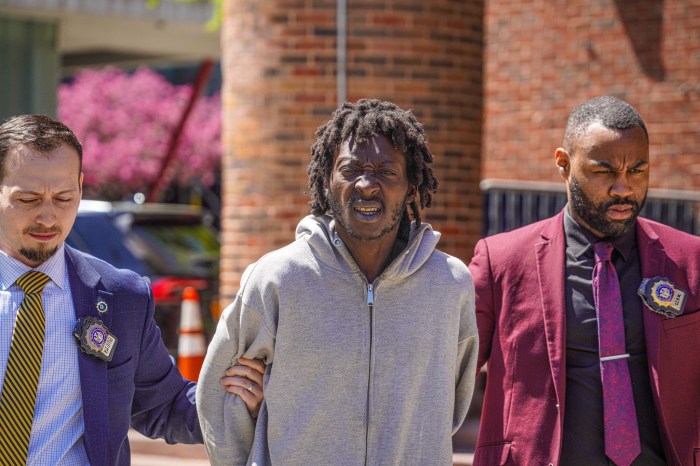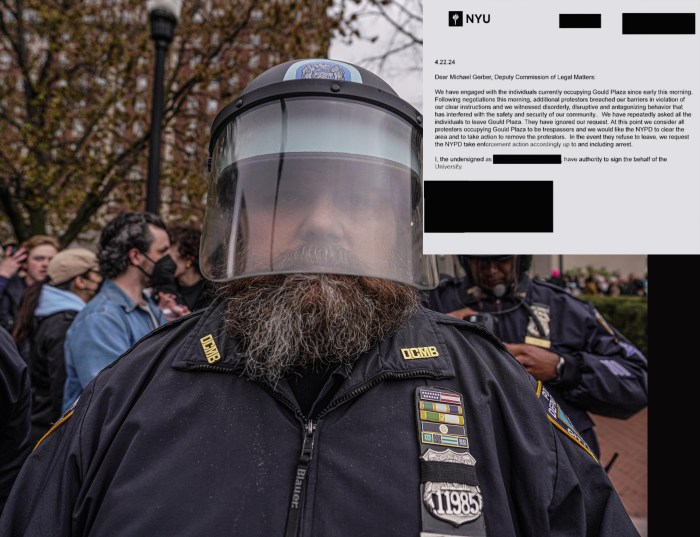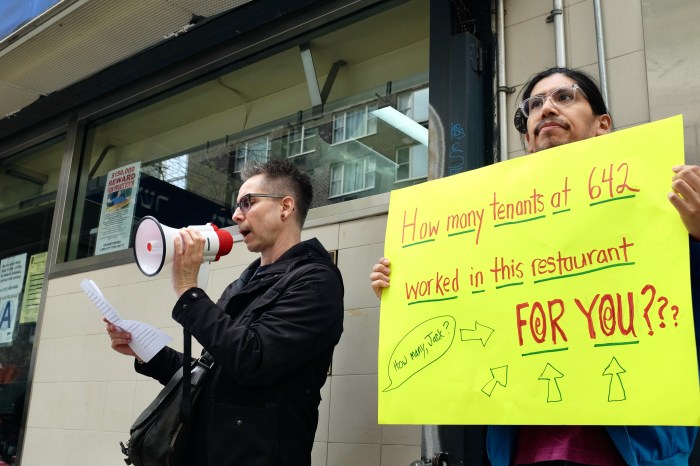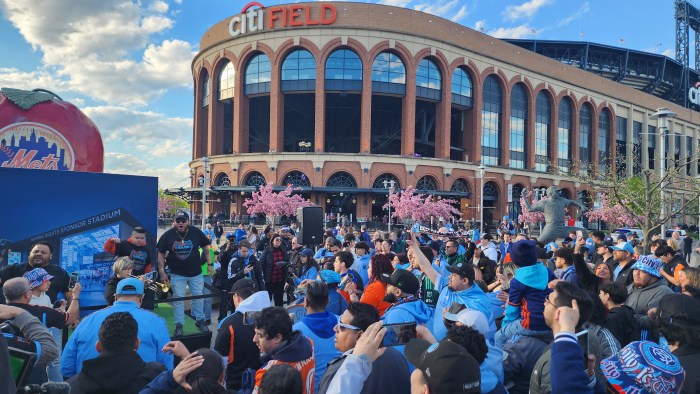-
 High Street on Hudson
High Street on Hudson
637 Hudson St.
Since opening its doors in December 2015, this eatery has been serving up hearty sandwiches, fresh bread and pastries.
The Little Owl
90 Bedford St.
The menu features Mediterranean and American dishes, including the customer favorite: gravy meatball sliders, a recipe by the owners’ Grandma Rosie.
L’Artusi
228 W. 10th St.
This Italian restaurant serves small plates with everything from charred octopus to ravioli. There’s also an extensive wine list to complement any meal.
” data-id=”111479524″ data-link=”https://amnewyork.wpengine.com/wp-content/uploads/2019/10/8971_image.jpg” class=”wp-image-1.11479524″/>Photo Credit: Linda Rosier -
 Anfora
Anfora34 Eighth Ave.
This cozy wine bar serves vino from around the world, as well as cheese plates, charcuterie and other small bites.
Cubbyhole
281 W. 12th St.
A local lesbian and gay bar with a jukebox and colorful decor dangling from the ceiling.
Art Bar
52 Eighth Ave.
With comfy couches and art-filled walls, Art Bar is grungier than most West Village hangouts but its happy hour prices draw in the crowds.
Artbar.com
” data-id=”111479527″ data-link=”https://amnewyork.wpengine.com/wp-content/uploads/2019/10/8972_image.jpg” class=”wp-image-1.11479527″/>Photo Credit: Linda Rosier -
 Albertine
Albertine
13 Christopher St.
An intimate boutique with unique gifts and clothes, including smaller brands and an in-house clothing line.
bookbook
266 Bleecker St.
Formerly the Biography Bookshop, this store carries a wide variety of biographies, fiction, art, fashion and children’s books.
Greenwich Letterpress
39 Christopher St.
This stationary shop uses 75-year-old letterpresses to print custom invitations and announcements, as well as cards for every occasion.
” data-id=”111479594″ data-link=”https://amnewyork.wpengine.com/wp-content/uploads/2019/10/8973_image.jpg” class=”wp-image-1.11479594″/>
Photo Credit: Linda Rosier -
 Cherry Lane Theatre
Cherry Lane Theatre38 Commerce St.
This off-Broadway theater has been in operation since the 1920s and features contemporary American works on its two stages.
Hudson River Park
Chambers Street to West 59th Street
This waterfront park not only offers great views of the river, but it’s also ideal for jogging, biking and walking dogs. Outdoor movies and live music are also offered when the weather permits.
IFC Center
323 Sixth Ave.
Focusing on independent films, this theater shows a variety of HD digital and 35mm documentaries, foreign films and cult classics. It also sells organic popcorn.
” data-id=”111479523″ data-link=”https://amnewyork.wpengine.com/wp-content/uploads/2016/02/image-55.jpg” class=”wp-image-1.11479523″/>Photo Credit: Linda Rosier -
 Transportation
TransportationTrains:
1 at Houston Street, Christopher Street and 14th Street
2, 3 at 14th Street
A, C, E at West Fourth Street and 14th Street
B, D, F, M at West Fourth Street
PATH at Christopher Street
Buses:
M5, M8, M11, M12, M14A, M14D, M20, M21
Crime:
The West Village is covered by the 6th Precinct at 233 W. 10th St. The precinct reported one robbery and three burglaries in the week of Feb. 1-7, according to its CompStat report. It logged one rape and no murders so far in 2016 as of Feb. 7.
Celebrities who have lived here:
The nabe is home to multiple celebrities, including Louis C.K., Julianne Moore and Liv Tyler. In the past, Willem Dafoe and Jennifer Aniston resided here as well.
Movies & TV:
Monica Geller’s iconic apartment in “Friends” is on the corner of Grove and Bedford streets, and the 2013 film “Inside Llewyn Davis” was set in West Village and Greenwich Village.
” data-id=”111479516″ data-link=”https://amnewyork.wpengine.com/wp-content/uploads/2019/10/8974_image.jpg” class=”wp-image-1.11479516″/>Photo Credit: Linda Rosier -
 An Airbnb room in the West Village designed by the creative collective ART404 along with digital artist Tom Galle brings “Netflix and chill” to a whole new level.
An Airbnb room in the West Village designed by the creative collective ART404 along with digital artist Tom Galle brings “Netflix and chill” to a whole new level.For $400 a night, the room comes complete with Netflix sheets and pillows, an HD projector, surround-sound speakers, a stocked mini bar and, of course, a Netflix account.
“We’ve just been playing around in general this year with Internet culture and how to bring it from URL to IRL,” said Moises Sanabria, a creative director at ART404.
The collective has had a few inquiries, but Sanabria said no guests have booked the room yet.
Airbnb didn’t return a request for comment.
” data-id=”111479525″ data-link=”https://amnewyork.wpengine.com/wp-content/uploads/2016/02/image-57.jpg” class=”wp-image-1.11479525″/>Photo Credit: Linda Rosier -
 Median sales price: $1,350,000
Median sales price: $1,350,000
Number of units on market: 621
Median rental price: $3,650
Number of rentals on market: 3,895
” data-id=”111479520″ data-link=”https://amnewyork.wpengine.com/wp-content/uploads/2016/02/image-58.jpg” class=”wp-image-1.11479520″/>
Photo Credit: Linda Rosier
The West Village is a serene escape from the city’s usual noisy and crowded streets, but only for those who can afford it.
“It’s always super clean and quiet,” said 34-year-old Aly Teich, who’s lived in the nabe for more than two years. “New York City is so busy and hectic all the time, and when you come back to the Village, it feels just like that: a village.”
Though sometimes confusing for newcomers, the small, tree-lined streets that veer off the rest of Manhattan’s grid aren’t congested with traffic and create a more secluded atmosphere than both Greenwich Village and the East Village.
“I grew up in New York City, and I feel like the West Village has done a good job maintaining its history,” Teich added.
A significant chunk of the neighborhood belongs to the Greenwich Village Historic District, so the pre-war brick buildings and overall aesthetic of the area have been well preserved. One of the oldest buildings in the neighborhood is the Isaacs-Hendricks House at 77 Bedford St., according to the Greenwich Village Society for Historic Preservation. Built in 1799, the Federal-style house sold for $7.35 million in 2013.
Most of the restaurants and shops are still small and independently owned, like the bookstore Three Lives & Company on 10th Street that’s been around for nearly 50 years, and speakeasy-style bars like Employees Only on Hudson Street and The Garret, tucked away on a second floor on Bleecker Street, are peppered throughout the nabe.
“You feel as though you’re in more of a European-style pre-war neighborhood,” said Citi Habitats realtor Rory Bolger.
That feeling doesn’t come cheap, though. One-bedroom apartments in the area’s typically small, pre-war walkups average around $3,500 per month, while co-ops for sale in older brick buildings sell for about $1.2 million. There are some newer luxury condos, including 150 Charles St. and The Printing House on Hudson Street, and they average around $1.8 million for a one-bedroom.
While families are drawn to the quiet nature of the area, its convenient location and abundant nightlife also attract a lot of young professionals.
And the West Village can’t be described without including its strong LGBTQ community, as it is often called the birthplace of the gay rights movement. The Stonewall Inn on Christopher Street was the site of the June 1969 Stonewall Riot, which became a call to arms for people to fight back against LGBTQ discrimination.
“There’s a lot of artists, a lot of eccentric types, a lot of young people,” said Peter Kaye, the general manager of Bleecker Street Records on West Fourth Street. “There’s a palpable energy that you don’t get in Midtown.”
Find it:
The West Village stretches north to south from 14th Street to West Houston Street, and east to west from Sixth and Greenwich avenues to the Hudson River, according to StreetEasy.

















